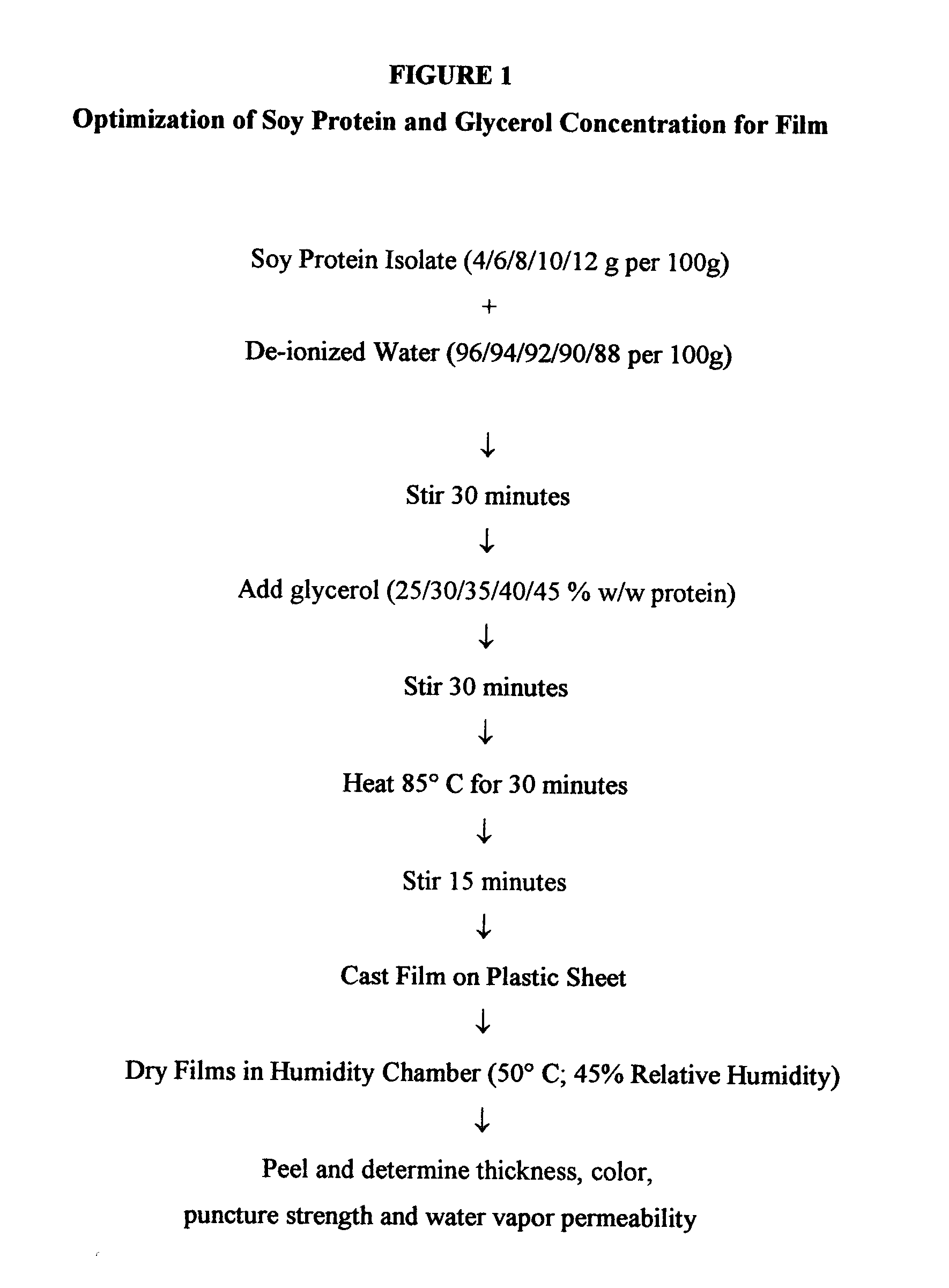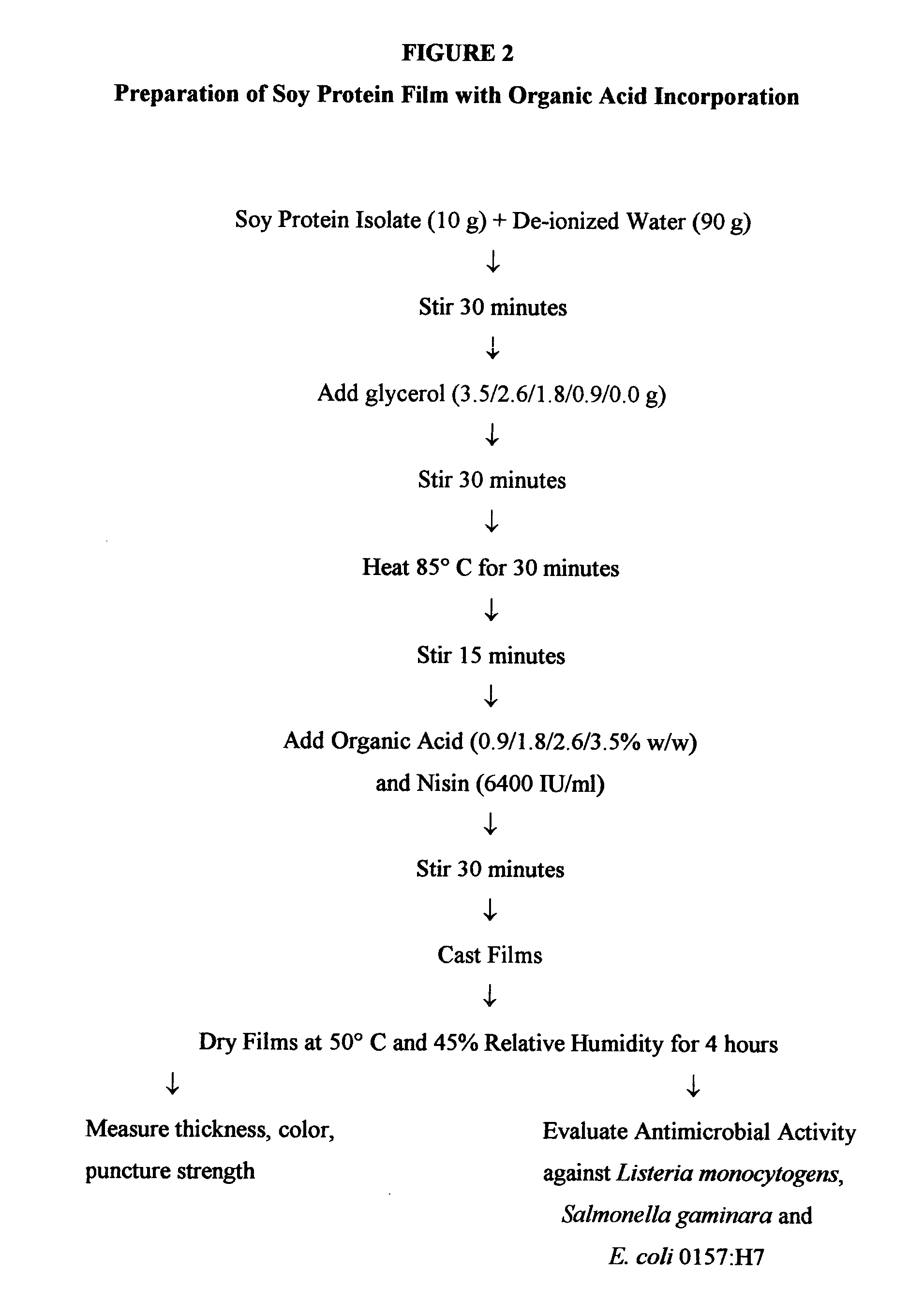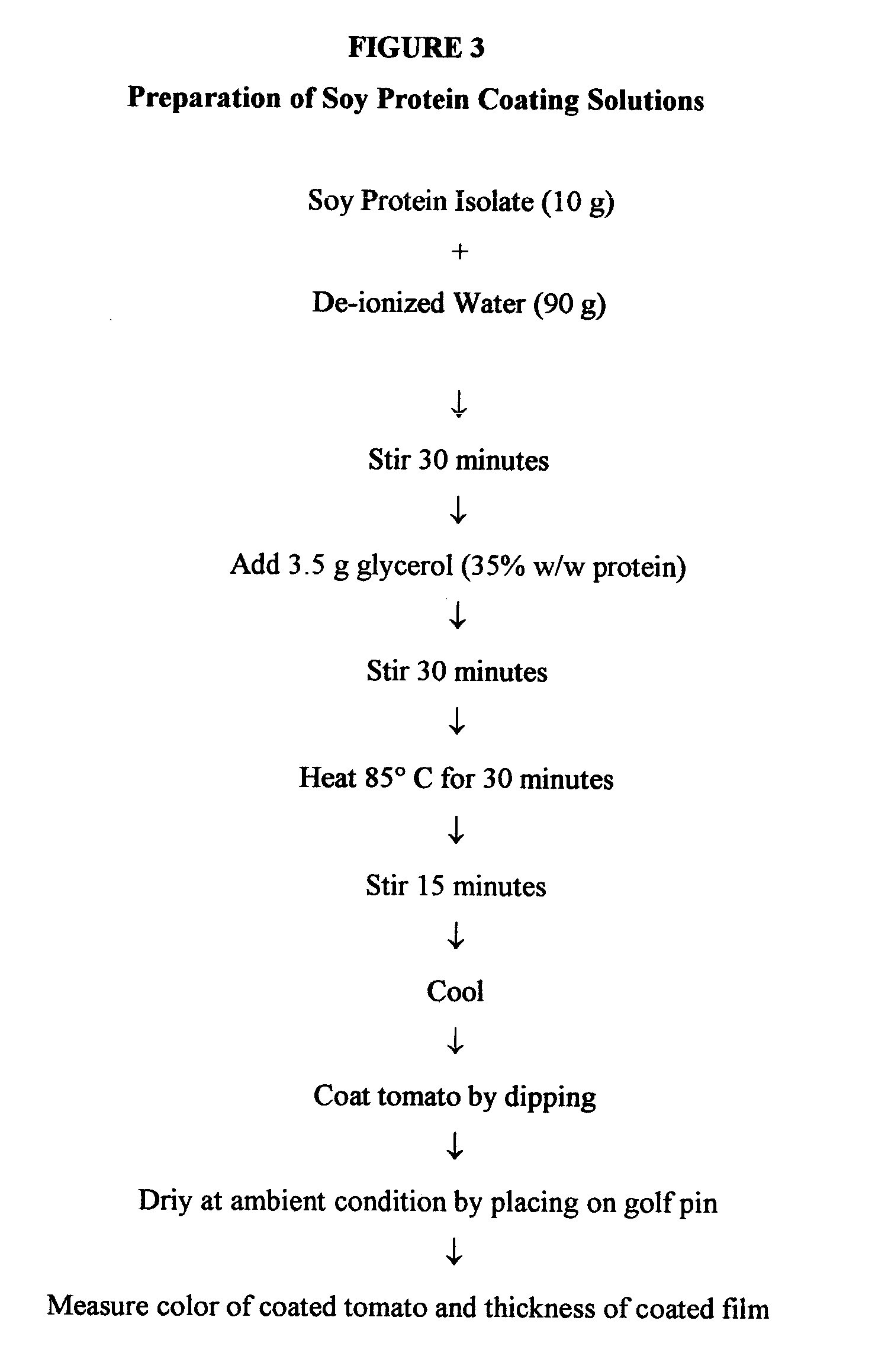Organic acids incorporated edible antimicrobial films
- Summary
- Abstract
- Description
- Claims
- Application Information
AI Technical Summary
Benefits of technology
Problems solved by technology
Method used
Image
Examples
example ii
8.2 Example II
Preparation of Organic Acid Incorporated Soy Protein Film
Optimized soy protein film was selected to study the effect of citric, lactic, malic and tartaric acids on mechanical property of nisin (6400 IU / g) incorporated film. Soy protein was selected because of its suitability to produce films at a wide range of pH and additives without any adverse effect on solubility. Antimicrobial nisin was selected at a level of 6400 IU / g that would not cause complete destruction of microorganisms. Since organic acids have OH groups in their molecules, plasticizing effect of organic acid in combination with glycerol was investigated. Glycerol percentages of 25, 50 and 75 were replaced with organic acid percentages of 75, 50 and 25. The glycerol used to produce desirable film was 3.5 g in the films forming solutions. Control films with 3.5 g of glycerol were also included. Films produced with 3.5 g of organic acid and 0 g glycerol were brittle.
Soy protein isolate, de-ionized water...
example iii
8.3 Example III
Thickness and Puncture Strength
Table 3 shows the effect of organic acids, nisin and glycerol on the thickness and puncture strength of the soy protein film. Thickness of citric (38.4 to 44.7 μm) and tartaric (34.9 to 42.6 μm) acids incorporated film were higher than lactic (23.8 to 38.7 μm) and malic (21.3 to 32.7 μm) acids incorporated film. Higher molecular weight (192.13 Dalton) of citric acid and tartaric (150.09 Dalton) compared to malic (134.09 Dalton) and lactic (90.08 Dalton) acids may account for this increase in thickness of the film.
Since the mechanical strength of the film was low, puncture strength was measured to evaluate mechanical strength of the film. The addition of nisin and lowering of the pH from 6.95 (original pH) to 4.55 and 3.85 (near isoelectric pH) decreased the puncture strength of the soy protein film. This is in agreement with previous reports that puncture strength of soy protein film was lower in acidic pH and higher in alkaline pH (...
example iv
8.4 Example IV
Zone of Inhibition
Antimicrobial activity of the film was measured by 1 cm-diameter film disk on lawn of Listeria monocytogens, Salmonella gaminara and E. coli 0157:H7 containing nutrients agar plate. Thickness of the clear zone around the film disk in the lawn of bacteria is shown on Table 3. Very little inhibition of L. monocytogens (<0.1 mm) was observed in soy protein film containing nisin and 3.5% glycerol. However, inhibition of L. monocytogens increased in the presence of 0.9; 1.8 and 2.6% of citric acid (1.6, 2.4 and 4.0 mm), malic acid (1.5, 3.0 and 5.5 mm) and tartaric acid (2.0, 3.5 and 4.8 mm) compared to control (without organic acid) at pH 4.55, 3.85 and 3.35 (<0.5, 1.0 and 1.5 mm). Films with 2.7% organic acids without nisin also demonstrated the same level of inhibition as with nisin. Salmonella was inhibited only by the incorporation of citric acid 2.6% (<0.1 and 1.1 mm). Films with 2.6% organic acids without nisin revealed lower levels...
PUM
| Property | Measurement | Unit |
|---|---|---|
| Temperature | aaaaa | aaaaa |
| Length | aaaaa | aaaaa |
| Fraction | aaaaa | aaaaa |
Abstract
Description
Claims
Application Information
 Login to View More
Login to View More - R&D
- Intellectual Property
- Life Sciences
- Materials
- Tech Scout
- Unparalleled Data Quality
- Higher Quality Content
- 60% Fewer Hallucinations
Browse by: Latest US Patents, China's latest patents, Technical Efficacy Thesaurus, Application Domain, Technology Topic, Popular Technical Reports.
© 2025 PatSnap. All rights reserved.Legal|Privacy policy|Modern Slavery Act Transparency Statement|Sitemap|About US| Contact US: help@patsnap.com



